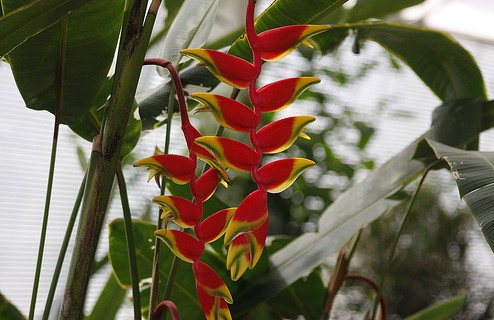Shallow planting water wax bonsai
Water wax belongs to the water wax family, evergreen all the year round, resistant to pruning, easy to shape, is an excellent material for making bonsai. This water wax tree stump oblique trunk tree stump height of about 60 cm, from the basic part of the two roots trend is very good, the overall transition is also good, after analysis and thinking, it is concluded that this is a very good bonsai creation material, natural and generous, very lasting. In order to ensure the survival of the shallow planting, I successfully transplanted the pile into the shallow basin by using the three-step position method. The specific methods are:
In the first step of ①, I prepared a medium tile pot to plant water wax stumps, while using loose and breathable sandy loam to facilitate root growth. In my pile cultivation process for many years, the survival rate of water wax is very high. After a year of careful maintenance has been luxuriant.
The second step of ② is around Ching Ming Festival in spring, knock the wax pile out of the tile basin, try not to break the soil mass, then cut off the withered roots and surface floating soil around the soil mass, place it in a shallow basin, fill in the newly cultivated soil and press it, at the same time, transplant a small amount of moss, then sprinkle water evenly with a spray can, after a period of maintenance, confirm that the transplant survived, you can apply a small amount of mature liquid fertilizer. Artificially provide enough nutrients to plants to make bonsai leaves green and vibrant.
The third step of ③ is to trim the bonsai 2 to 3 times a year. The water wax has a strong germinating power and is easy to retain the film. The position that needs to be adjusted can be modeled with thin wire, and dilute liquid fertilizer is applied once a month to maintain proper soil moisture. After nearly 3 years of maintenance, a basin of water wax bonsai is beginning to take shape. As shown in the photo, the top piece can be removed to make it elegant, and it can also be cultivated for several years to make it grow into a big cloud. In short, it can be continuously improved and perfected in practice and exploration.
- Prev

How to cultivate weeping Firebird and Banana
Chuanhua Firebird banana is also known as Chuanhua Hejiao. The plant is tall and graceful, and the inflorescence is red and yellow. The leaves are like banana leaves, leathery. Spikes, zigzag drooping, inflorescence axis red, bracts are also red, tip is golden yellow, 15 million 20, arranged in two rows, resembling both beautiful birds
- Next

Discussion on pollution-free cultivation of bonsai
ASteiner, president of the International Association for pollution-free cultivation, clearly defines pollution-free cultivation as nutrient solution cultivation. Plants focus on the physiological functions of inorganic nutrient elements. Pollution-free cultivation refers to the use of inorganic nutrient solution to provide plants with nutrients necessary for growth, instead of the usual way of providing nutrients to plants by soil and organic matter. For pollution-free cultivation, nutrient solution can be sprayed directly to the root system (air culture), or plants can be directly planted in flowing inorganic nutrient solution (hydroponic culture), or sterilized microporous inorganic minerals.
Related
- Fuxing push coffee new agricultural production and marketing class: lack of small-scale processing plants
- Jujube rice field leisure farm deep ploughing Yilan for five years to create a space for organic food and play
- Nongyu Farm-A trial of organic papaya for brave women with advanced technology
- Four points for attention in the prevention and control of diseases and insect pests of edible fungi
- How to add nutrient solution to Edible Fungi
- Is there any good way to control edible fungus mites?
- Open Inoculation Technology of Edible Fungi
- Is there any clever way to use fertilizer for edible fungus in winter?
- What agents are used to kill the pathogens of edible fungi in the mushroom shed?
- Rapid drying of Edible Fungi

